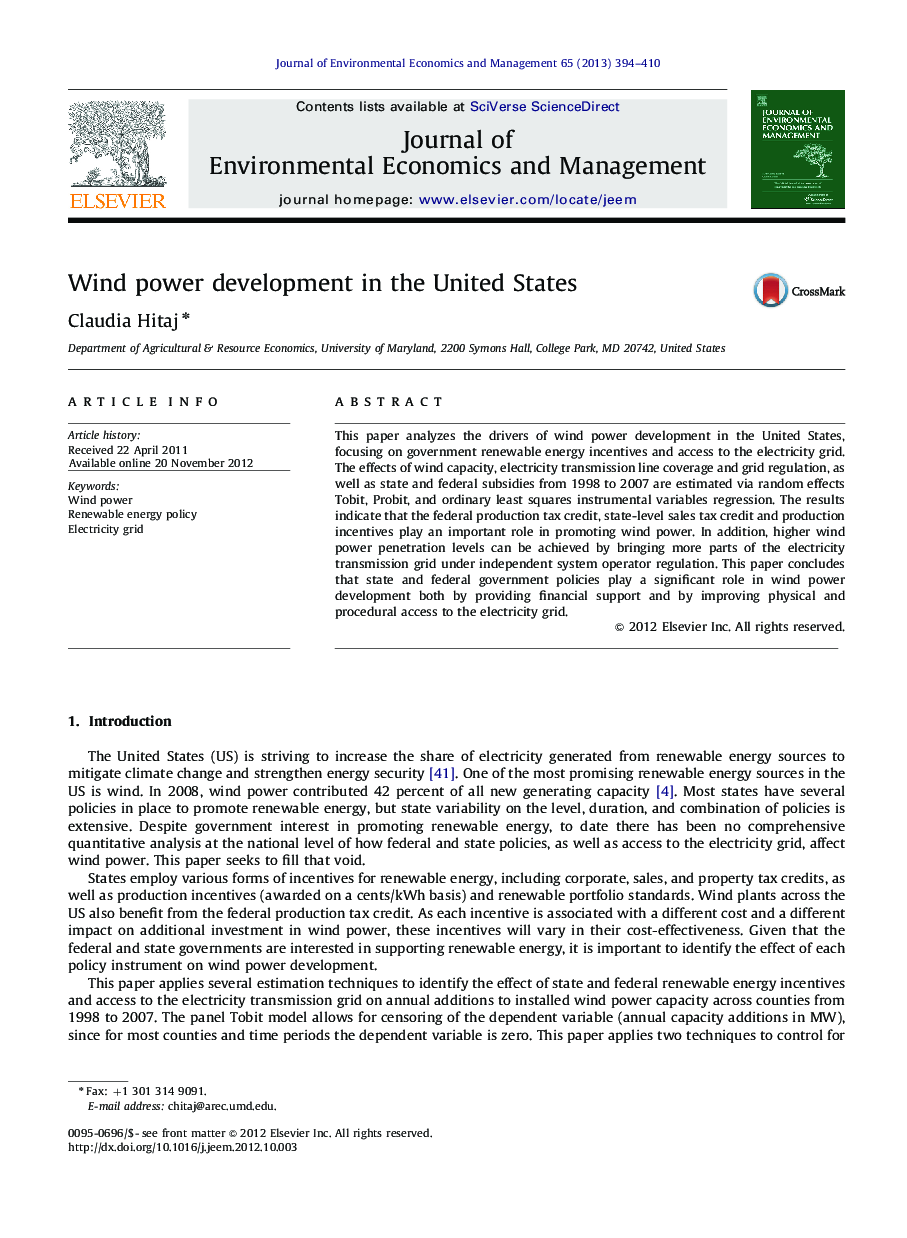| Article ID | Journal | Published Year | Pages | File Type |
|---|---|---|---|---|
| 958945 | Journal of Environmental Economics and Management | 2013 | 17 Pages |
This paper analyzes the drivers of wind power development in the United States, focusing on government renewable energy incentives and access to the electricity grid. The effects of wind capacity, electricity transmission line coverage and grid regulation, as well as state and federal subsidies from 1998 to 2007 are estimated via random effects Tobit, Probit, and ordinary least squares instrumental variables regression. The results indicate that the federal production tax credit, state-level sales tax credit and production incentives play an important role in promoting wind power. In addition, higher wind power penetration levels can be achieved by bringing more parts of the electricity transmission grid under independent system operator regulation. This paper concludes that state and federal government policies play a significant role in wind power development both by providing financial support and by improving physical and procedural access to the electricity grid.
